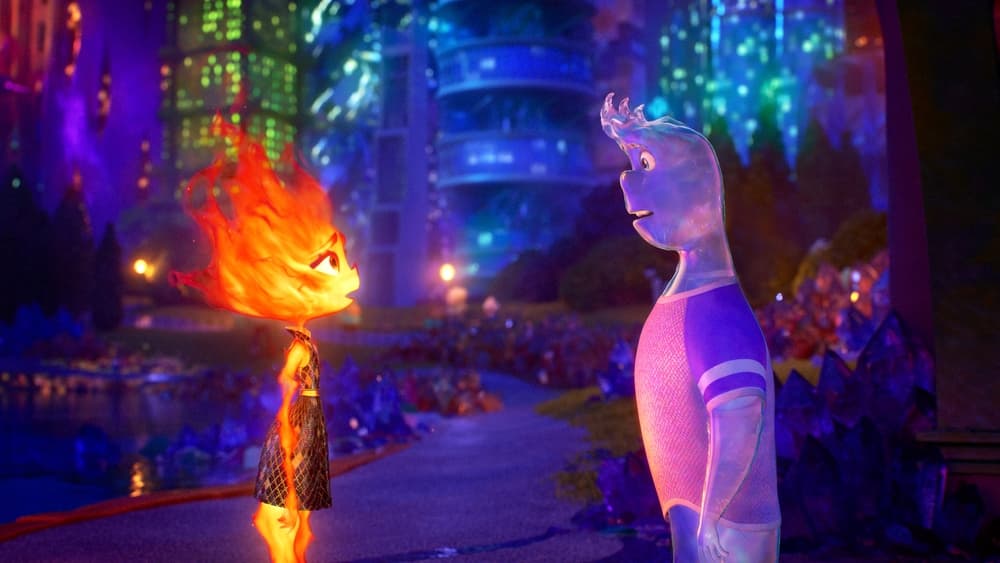Earlier this week, I wrote that Pixar’s decline in quality was because they started making films aimed more specifically at children instead of audiences of all ages, but I want to amend that slightly. The main issue is that while Pixar makes films for kids, the studio tries to sanitize the content, not trusting its audience to handle heavier, more complex emotions and situations.
What does “Elemental” gain from being about elements instead of humans? Are children going to learn more about immigrant stories and racism/xenophobia from stories not about real, human characters? Gone are the days when Pixar would tackle the soul-crushing nature of the 9-to-5 job or the death of the planet with nuance. Now, even if the studio wants to tackle more important issues, it spoonfeeds its audience all the answers and never gives its themes the depth necessary to explore them.
The main issue with “Elemental” is that the film’s major conflict comes entirely from the idea that elements can’t mix. It’s what keeps Ember and Wade, a fire person and a water person who begin to fall in love, from being together. This is supposed to work as a metaphor for xenophobia and trying to overcome that, but the issue lies in the fact that because of the world the film has built, it makes complete sense for different elements to be afraid of one another. Instead of fear and hatred of another group being entirely irrational (as it would be in the real world), in “Elemental,” the mixing of groups could kill one or more of the parties.
It then rings entirely hollow when Ember’s family comes around on Wade because the only justification they’re given to trust him is that elements actually can mix. Wade and Ember can touch and not harm one another, but the only explanation is “we changed each other’s chemistry.” It’s a cheap way to avoid the film’s primary conflict, and the emotional core suffers.
The love story is cute at times, and there are some beautiful moments of connection between Ember and Wade — like the two playing a game where Wade has to get Ember to cry, which she does when she realizes they can’t ever be together if they can’t touch, or when Wade takes Ember to see a flower that can survive any element that she was denied the chance to see as a child — but the whole relationship feels uninspired. It’s a formulaic love story where the partners can’t be together for some external reason but still find a way to make it work despite their differences.
The animation is also surprisingly unimaginative for a film of its enormous budget and high concept. Element City doesn’t stand out in any way, looking like a basic city with districts and neighborhoods that match their element inhabitants. The movements are fluid, and the characters and environments look crisp and fully realized, but compared to something like the medium-breaking “Spider-Man: Across the Spider-Verse,” the animation, like the narrative, feels like it's playing it too safe.
That risk aversion holds “Elemental” back from being considered alongside the pantheon of golden age Pixar classics. The concept sells its target audience short by acting like children can’t handle these real-world issues with human characters. It leads to a majorly boring experience for adults and, I imagine, for children who will either be too young to get any of what’s happening or old enough to see they are being cheated.

